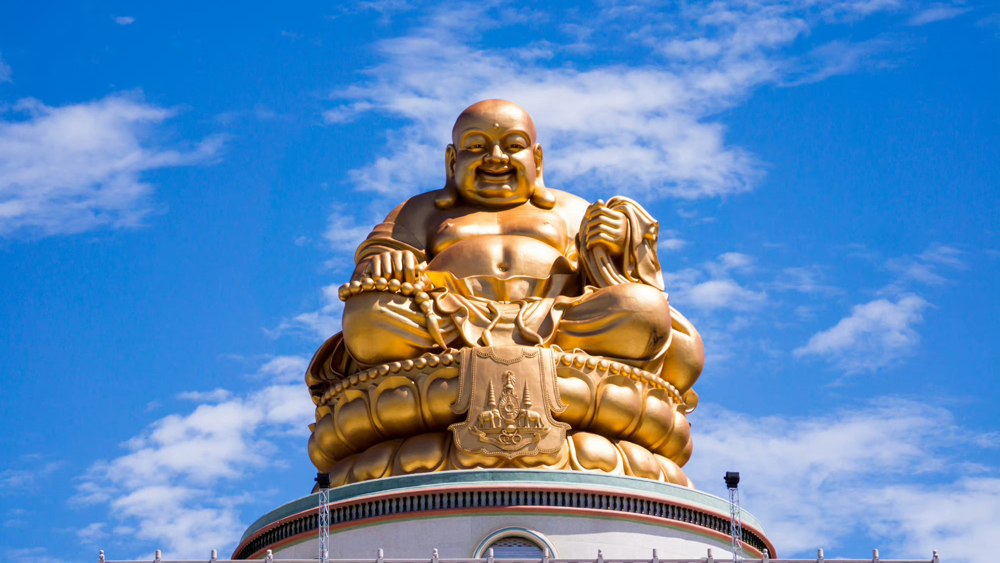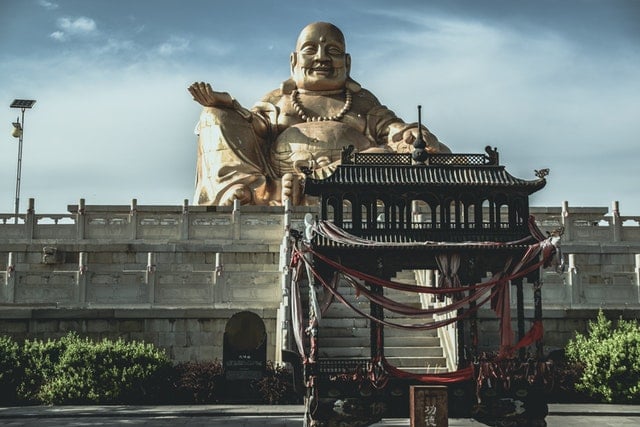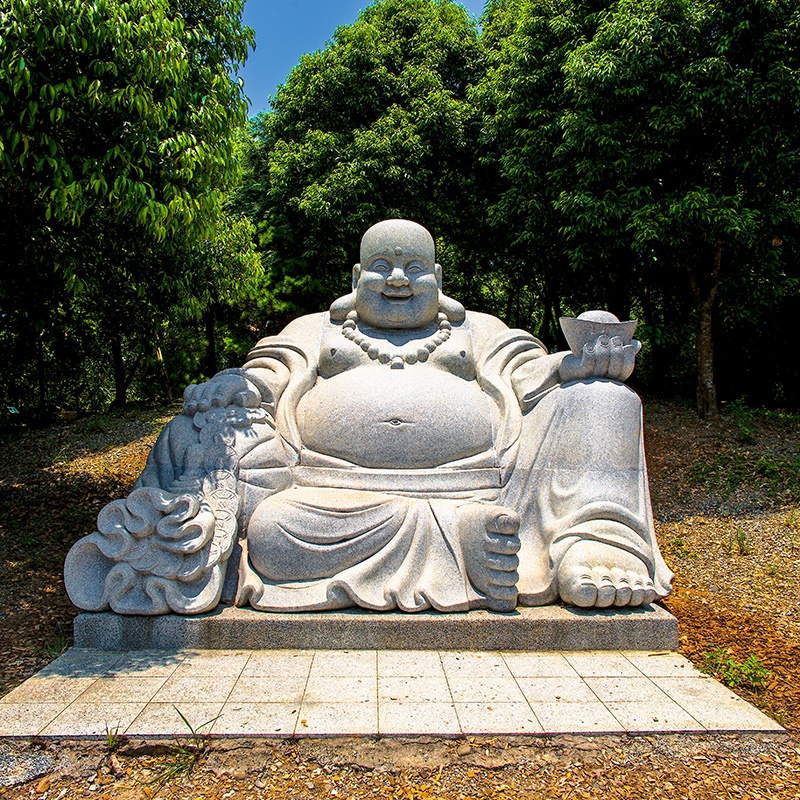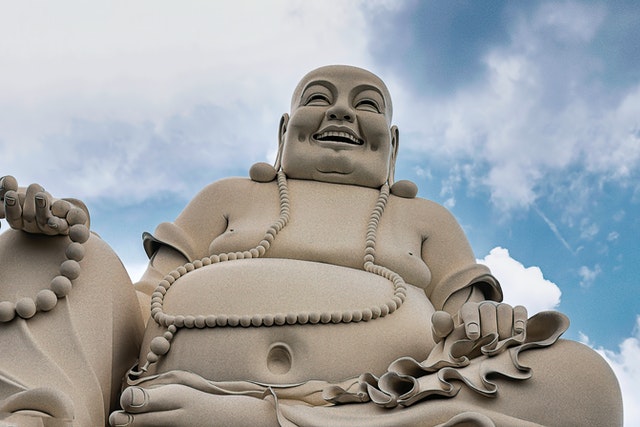Introduction

The various Buddhist statues in Buddhist culture are deeply loved by the world for their unique meanings and symbolic meanings. Among them, the Laughing Buddha statue, as a symbol of a joyful and happy atmosphere, has always attracted people’s attention and admiration around the world. This Buddha statue is not only a symbol of religious belief, but also a spiritual symbol representing a positive attitude and a happy life.
Legend and Origin
The Laughing Buddha statue, also known as “Maitreya Buddha” or “Fat Buddha,” is said to have been created by a prominent monk in the Tang Dynasty of China. This eminent monk teaches believers with a tolerant attitude, benevolent attitude, and cheerful expression, in order to inspire their pursuit of happiness and optimistic life. This positive and upward spirit is reflected in the smile of the Buddha statue, becoming its unique characteristic.
Symbolic Meaning and Metaphor

The smile of the Buddha statue is not only about its appearance, but also about its inner meaning. This smile conveys acceptance of life and joy in the world. In Buddhism, the Laughing Buddha statue is regarded as a symbol of happiness, health, and prosperity. People believe that having a smiling Buddha statue can bring them good luck, happiness, and positive energy. The obesity on the Buddha statue also symbolizes the fullness and richness of the world, making people understand that wealth and happiness are not only reflected in material aspects, but also in inner satisfaction and peace.
Shape and characteristics

The Laughing Buddha statue is usually depicted as a fat and kind monk holding a magic tool or bead string while holding the Buddha bead in the other hand, with a smile on his face and sometimes even laughing loudly. The ears of Buddha statues are often particularly large, symbolizing his listening and compassion towards people. In addition, the Laughing Buddha statue usually sits on a throne with its feet raised, appearing relaxed and cheerful. This relaxed and comfortable sitting posture conveys the comfort of life and the satisfaction of the human world.
Spread and influence in the world

The Laughing Buddha statue is not only popular in China, but also deeply loved by people around the world. Many people place this Buddha statue as a feng shui ornament or decoration at home or in the office to bring good luck and joy. In addition, Laughing Buddha statues often appear in shops, restaurants, and other commercial venues, symbolizing prosperity and commercial success. The smile and positive spirit of Buddha statues often inspire people, reminding them to maintain peace and joy in fast-paced life.
Joy and Peace of Mind

Although the statue of Laughing Buddha appears fat on the outside, it contains profound wisdom within. His smile teaches us to maintain a calm, open, and joyful heart in the complex world. His image conveys the true essence of life, allowing people to understand that happiness and happiness come from inner satisfaction and positive attitudes. The Laughing Buddha statue, through its smile, guides people to pursue inner peace and peace of mind.
Conclusion
Laughing Buddha statues are not only a part of Buddhist culture, but also a symbol of a positive attitude and happy life. His smile makes people feel the beauty of life and inner peace. This Buddha statue is respected and loved worldwide, not only because of its unique image, but also because of the positive energy and spiritual inspiration it conveys. His smile reminds us that happiness and happiness do not depend on external conditions, but on inner attitudes and satisfaction.

